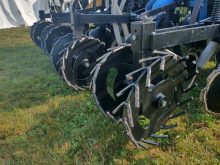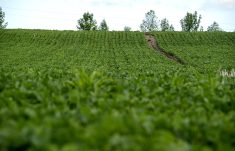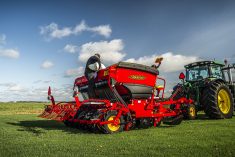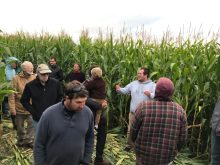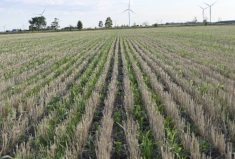Bio-strip tilling or bio-stripping is gaining attention from growers, particularly with the focus on sustainability and regenerative agriculture.
It was also the subject of a presentation at the Innovative Farmers Association of Ontario annual conference last month.
Nick Stokman, a producer from the Strathroy area, provided his experience with bio-stripping during the second day of the event, held in London.
Read Also
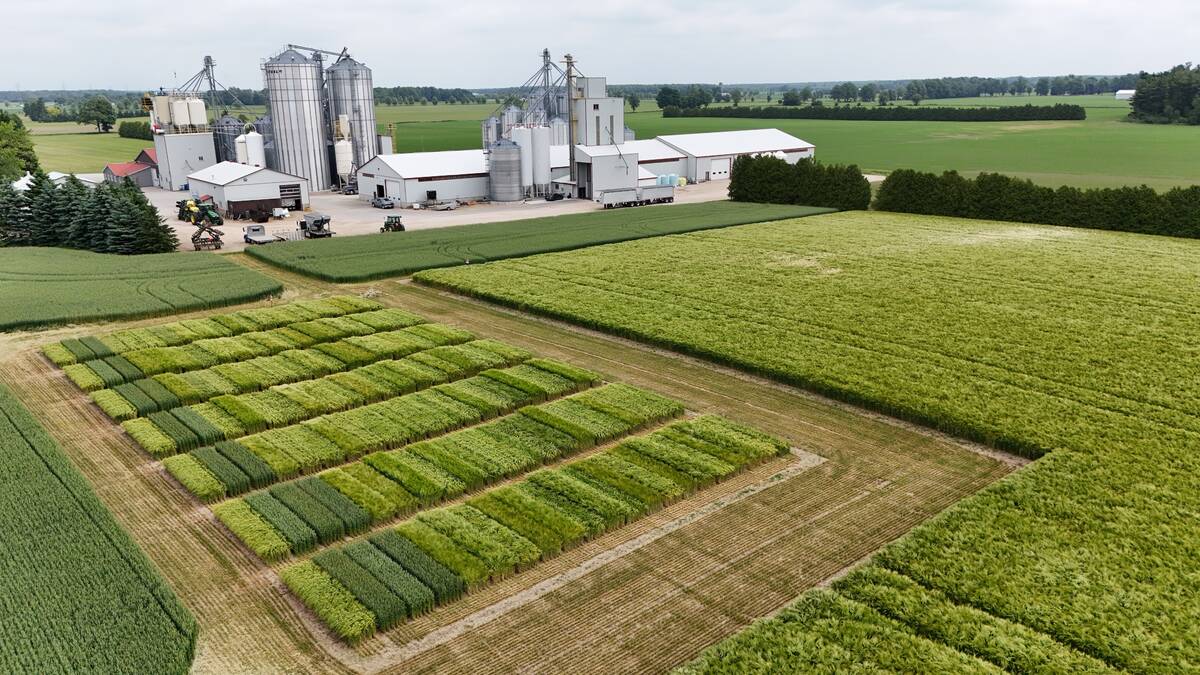
Winter cereals beyond wheat gaining traction
Winter cereals such other than wheat, such as barley, could provide better yield and rotation options for Ontario growers.
Stokman is a livestock producer with laying hens and a rotation of corn, identity preservation soybeans and hard red winter wheat with cover crops. He’s operated without primary tillage for more than 30 years on soils that run from clay-loam to heavy clay.
Why it matters: Bio-strip tilling can increase soil biomass but depending on much cover is left in the fall, it can present challenges come spring planting.
He became interested in bio-strip tilling because of the prospect of letting the plant selection and their roots “do the tillage” for him. But like all great concepts, there have been a few challenges.
“The difficult part, depending on what type of year you have and when that cover crop gets seeded, is how much cover we have going late into the fall,” said Stokman during his video presentation.
“Biomass is nice for all of the good soil health aspects but it can be a challenge the following spring.”
To plant into covered ground, Stokman used his vertical till unit in the fall to get some soil showing for spring.
In the first year of his three-year trial, he planted tillage radish into a decent stand of single-cut red clover, with the tillage radish going into next year’s corn rows. Where the red clover was poor, the tillage radish did very well. Wherever the red clover did well, there wasn’t a lot of tillage radish.
Hearing that another farmer was using a row cleaner to clear the rows in the spring, Stokman found a used row-crop cultivator that he converted to a row cleaner and used it in an area where the red clover was sparse and the tillage radish had done well.
“I was a bit concerned that tillage radish, being a brassica, doesn’t support mycorrhizal fungi and that planting corn into that might set it back a little,” said Stokman.
“That changed the approach for the second year and I had two fields going in to bio-strips.”
That year, the first field had an oat-based mix slated for forage late in the fall. The corn row was planted with 60 pounds of oats, the wheel track with 45 lb. of oats and five pounds each of cereal rye, winter triticale and winter barley. It received 60 lb. of nitrogen and a fungicide application. Stokman was walking his field in early October and the oats were in boot stage and getting “stemmy”, so he mowed the field.
The second field that year was a Huron cover crop mix with Austrian winter peas, cereal rye, some vetch and other species. There was some volunteer wheat in the field after frost in the late fall but seeding into the oat-based mix on May 13, Stokman was happy with his progress.
He was also content with planting into the Huron cover crop mix on May 15. There was a little more growth and it planted nicely into a crumbly soil, but it was dry, so he stopped.
A mix of heavier-than normal rainfall followed by a prolonged dry spell from mid-June to the end of July stressed that field’s production.
The following year – year three – he planted a modified cover crop recipe, placing one part Austrian winter peas, one part forage peas, 1.5 parts faba beans and 0.5 parts sunflowers into the corn row.
“It was going on a little heavier than desired at 46 lb. It’s pretty expensive at $65 per acre,” said Stokman.
“The wheel-track mix was one part oats and 0.5 parts cereal rye, winter triticale and winter barley, and those were products I still had in supply, so the rate was 31 lb. and $16 per acre. Compared to single-cut oats at $30 per acre, it’s not a bad average cost (at $31).”
Read more on this topic from Ralph Pearce at Country Guide.






